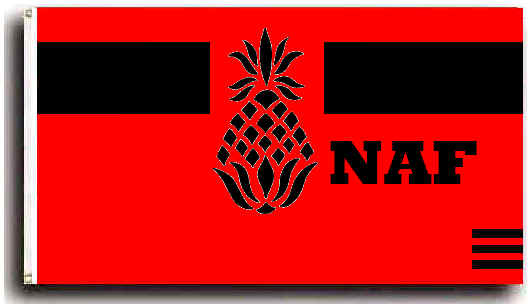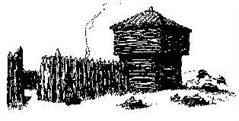
RANDY BUBLITZ
Staff
Writer
|
SMOKE SIGNALS ___________________________ It's that time of the month to sit down and share some findings we have experienced. You wouldn't believe how hard this can be without repeating ones self. Every other month we get the friendly reminder from Buck to get him an article. This is hard with working, family affairs and following this way of life. That said, I'll share a few things we have rediscovered from those that went before us. GARLIC If you have read the “Journals of Lewis & Clark” you will find that Thomas Jefferson made a recommendation that the Corp of Discovery use “Garlic” to help with insect bites. As you have mentioned when taken over a period of time the aroma will seep through your pores leaving a strong odor to others. Thomas Jefferson is responsible for many of our fruits and vegetables we grow here today and not common to this country (he trade for seeds world wide while in Europe before becoming President). We use to do period correct canoe trip and started using garlic to protect us from mainly mosquito bites in MO and ILL. Surprisingly as T. J. had suggested it works, "you can watch the little buggier's hover over your skin but didn’t bite". Biggest problem we found was most people we came across kept their distance, we never noticed any odor as we all had been using garlic for several months before making a trip. CARCASS UTILIZATION MEAT Beaver, muskrat and raccoon can be used for human consumption. The meat from these animals is very good if prepared properly. Animals that are freshly caught, skinned and gutted will taste the best. The front and hind quarters and back meat are most commonly utilized, while the rib cage area is usually discarded. All meat should be soaked in salt water overnight before preparing. All fat should be carefully removed from raccoon and parboiling further helps to eliminate fat and the taste it imparts to the meat.All oil should be skimmed or poured off after boiling. Beaver and muskrat carcasses can be sold to fur farms as animal feed or to sled dog trainers. Carcasses should be gutted and frozen while being stored. Most dogs will eat beaver and muskrat carcasses. These can be used as excellent supplements to or substitutes for dog food. The meat from many fur bearers can all be used as trapping bait. Muskrat is excellent bait for mink. Pieces of beaver or muskrat, either fresh or tainted, work well for canines and cats, especially in winter, as is bobcat or lynx.High school biology teachers in your area might want carcasses or skulls for use as teaching aids in anatomy or taxonomy classes. The trapper should attempt to utilize the full value of every fur bearer.GLANDS Many trappers are unaware of the value of the glands of animals that they trap. Some glands have commercial value and others are valuable to the trapper for formulating his own lures. On beaver, castor glands and oil sacs, both found in the anal area, are of value and can be removed by carefully pulling and cutting the flesh away from the glands. The oil sacs are light in color and contain a yellowish, oily fluid. The castor glands are darker with a veined appearance. Care should be taken to keep the pair of castor glands joined together. Castors are normally dried before selling, but can be frozen. To dry, hang them over a rope or wire. Dry them for one day, essence). room temperature, then freeze until sale. Beaver castor is used extensively in the perfume industry as well as by lure manufacturers. Members of the weasel family (mink, weasel, skunk, otter, fisher) have anal glands which contain a powerful musk useful in lure making. These glands open in the anal area and are pod-shaped, containing liquid musk. They can be cut loose carefully with a minimum of squeezing and should be kept cool or frozen until used. The glands of weasels are particularly valuable as an attractant for mink, otter, weasel or canids. The anal glands and foot pads of canines are often used in lure making for those species. The glands of raccoons, opossums, badgers, and muskrats are less commonly collected for lure making. Caution: Glands should be doubly or triply sealed before placing in the family freezer, and even then you do so at your own risk! Skunk glands can be removed by the method described above, but it is easier (and safer) to withdraw the musk with a syringe and inject it into a jar that can be tightly sealed and stored in a cool place (there is no need to freeze pure skunk. Good luck if you have the guts......... Randy Bublitz
___________________________ Page 5 updated 03/10/2010 |


 come warm yourself friends
come warm yourself friends